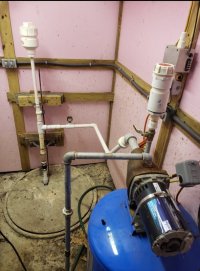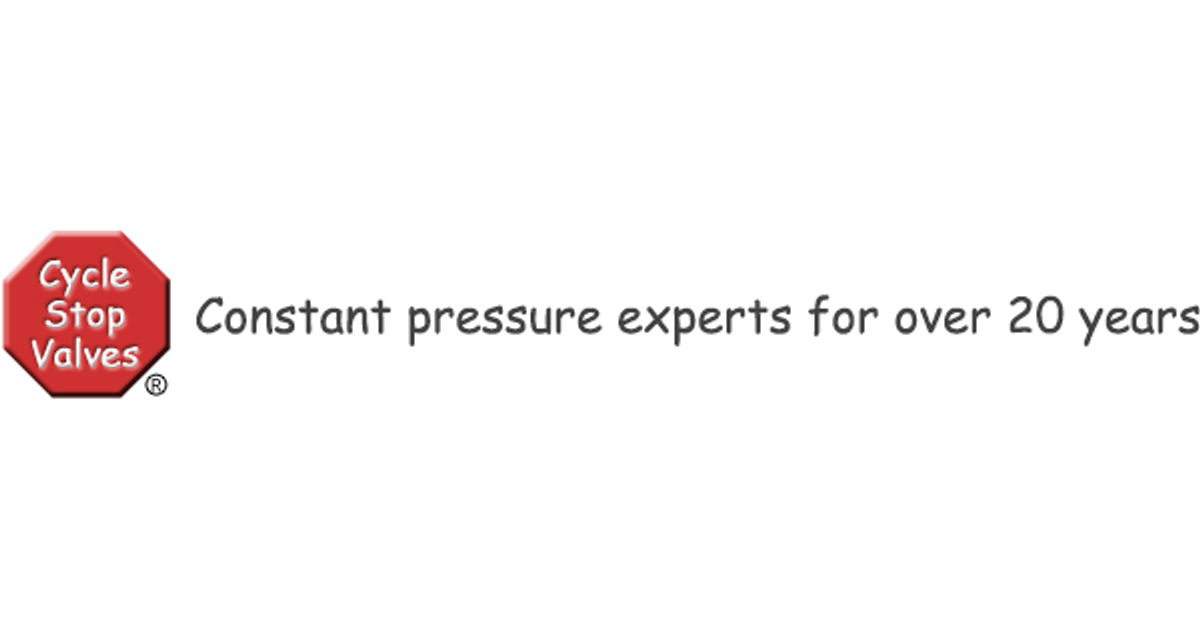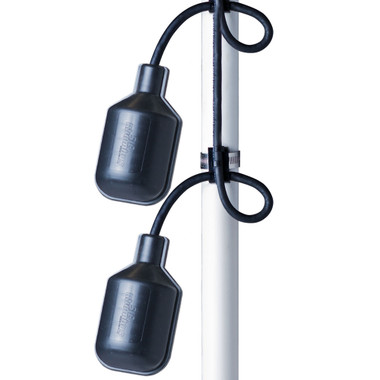nogolowflow
New Member
New homeowner and novice DIY-er with capacity to learn but not a lot of experience. At the very least, I want to know what to discuss with a contractor.
We have a low-capacity well just below ground. It is fed by a spring at an estimated 0.5 to 1.5 gpm, depending on rain conditions. Once 50 gallons is full, water flows out and to little creek.
Setup is the well, extracted by surface jet pump, which is mounted on a pressure tank (currently 35/55). Pumps up hill to house and studio apartment (3 adults). Pump really has to push at 40/60, and overheated at 45/65. We don't have dry well protection. Water is insufficient without coordination and regular management.
We have two, 300-gallon cisterns at the house. Total 600 gallons. We can add water to the cisterns by manually opening/closing a valve at the house. They are plumbed directly off of the main line (served directly by the well jet pump), before and without any filtering that otherwise serves the house. In their current setup, they are merely additional storage for occasional, manual water collection, used for outdoor applications. They are connected to their own jet pump setup, mounted to a pressure tank, so that outdoor applications have decent pressure.
It seems like increasing storage, fed directly by the spring, would make the most sense. It also seems like a submersible pump would be safest and most efficient. I've heard the 50-gallon, spring-fed well described as a cistern (prior homeowner). I haven't lifted the concrete cover to inspect what the storage actually consists of. Whatever it is, it's not sealed, and the collection takes place very close to the surface (just below, i believe). A pump house is built over the setup, and I suspect replacing the 50-gallon well (or cistern) with a larger capacity tank might be costly and challenging. A neighbor has heavy equipment likely up for the task, I think, but it still seems very complicated due to the pump house structure, etc.
I welcome and very much appreciate guidance/advice. A pic of the current, primary setup is attached.
We have a low-capacity well just below ground. It is fed by a spring at an estimated 0.5 to 1.5 gpm, depending on rain conditions. Once 50 gallons is full, water flows out and to little creek.
Setup is the well, extracted by surface jet pump, which is mounted on a pressure tank (currently 35/55). Pumps up hill to house and studio apartment (3 adults). Pump really has to push at 40/60, and overheated at 45/65. We don't have dry well protection. Water is insufficient without coordination and regular management.
We have two, 300-gallon cisterns at the house. Total 600 gallons. We can add water to the cisterns by manually opening/closing a valve at the house. They are plumbed directly off of the main line (served directly by the well jet pump), before and without any filtering that otherwise serves the house. In their current setup, they are merely additional storage for occasional, manual water collection, used for outdoor applications. They are connected to their own jet pump setup, mounted to a pressure tank, so that outdoor applications have decent pressure.
It seems like increasing storage, fed directly by the spring, would make the most sense. It also seems like a submersible pump would be safest and most efficient. I've heard the 50-gallon, spring-fed well described as a cistern (prior homeowner). I haven't lifted the concrete cover to inspect what the storage actually consists of. Whatever it is, it's not sealed, and the collection takes place very close to the surface (just below, i believe). A pump house is built over the setup, and I suspect replacing the 50-gallon well (or cistern) with a larger capacity tank might be costly and challenging. A neighbor has heavy equipment likely up for the task, I think, but it still seems very complicated due to the pump house structure, etc.
I welcome and very much appreciate guidance/advice. A pic of the current, primary setup is attached.



